|
BULB LOG 33 --- 16th August 2006
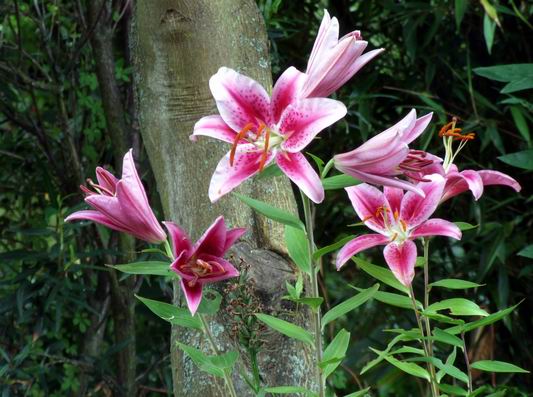
Lily hybrid
The truth is it has been a quite week on the bulb front, there is plenty needing done both to the bulbs and the garden but I have been busy working on other things including completing some talks as the meeting season is looming and I give my first talk in Oslo in ten days time. A walk around the garden to see what is in flower and to write about for this week's log, results in few flowering bulbs but I did find this lily hybrid.

Rhodohypoxis trough
Some of the Rhodohypoxis are still hanging on; producing yet another succession of blooms. They are fantastic summer bulbs lasting for months in the fish box troughs as long as they are kept well watered.
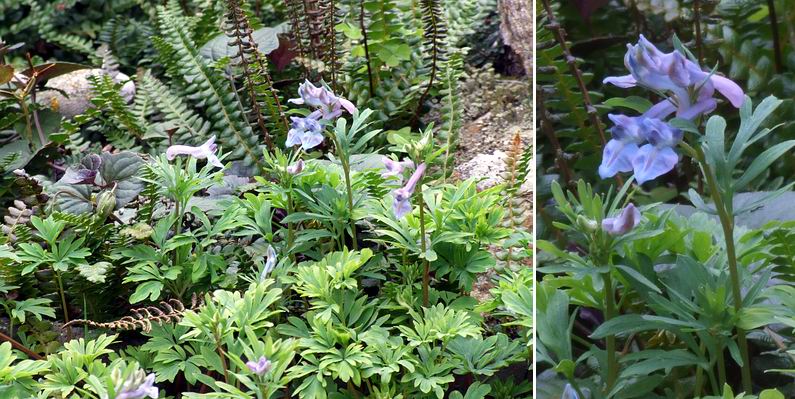
Corydalis cashmeriana
Also growing in polystyrene troughs is this Corydalis cashmeriana : it is the one that I split up a couple of years ago turning it into two troughs full. Corydalis cashmeriana grows and flowers in the spring, then it dies down as the days lengthen and the days warm up, only to reappear as the days shorten again and the heat of summer is past. I gave it a good feed with Vitax Q4 about three weeks ago and have kept it well watered and now there is a complete flush of new growth including a few flowers. These are never as blue as they are in the spring flowering.
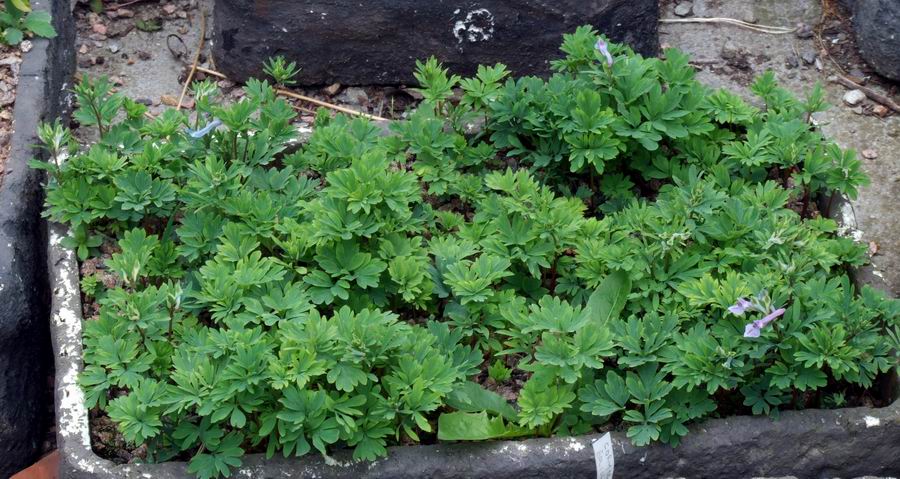
Corydalis cashmeriana new growth
Here is the other trough-full fine healthy growth thanks to the boost from the Vitax. I can look forward to a good show of flowers in these troughs next May and then I will split them again next summer.
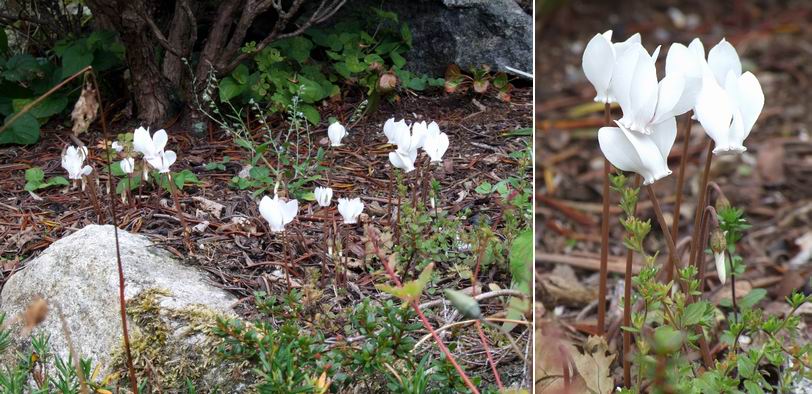
Cyclamen hederifolium album
Off around the garden to find Cyclamen hederifolium album has sprung into flower; it never ceases to amaze me how quickly bulbs can burst into flower when the conditions suit them.
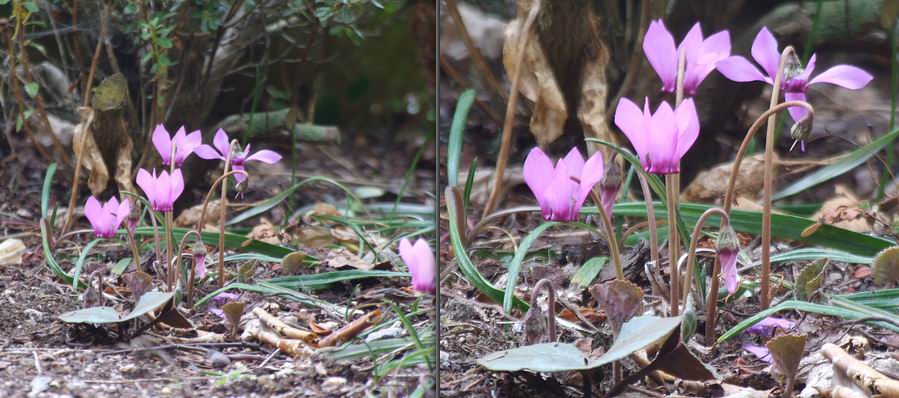
Cyclamen purpurascens
Also in the same bed Cyclamen purpurascens continues to send up its beautifully scented flowers. This is always the first of the cyclamen to flower in the summer and the first flowers opened before the middle of July.
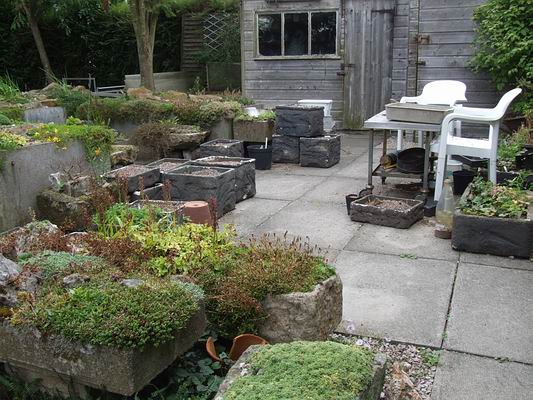
Repotting station
The repotting station is surrounded by piles of deep fish box troughs still waiting to go back to the top of the garden after I repotted the erythroniums that are growing in them.

Path
Some parts of the path are never without little groups of pots that we do not have frame space for. I hope that after a bit of tidying and reorganising these pots will find a better home before the winter. That dandelion beside the Nerine leaves, by the way, is not a weed. It is one of two pet dandelions that I grow - they are fantastic plants and when they are in full flower there are few plants that can compete with their beauty. I just make sure that I remove all the flower stems as soon as the flower goes over so they do not set seed. You see there are no bad or problem plants just bad or problem gardeners.

Pots in bulb house
In the bulb house I have repotted everything that I did not get around to repotting last year. I still believe it is best if you can repot annually but as we grow more and more pots every year it has become almost impossible for us to get through them all so I make sure they are done at least every second year. The ones that did not get repotted will receive extra additional feeding as required - watch the log for how and when.

Frit house
The big push was in the Frit house where I have converted everything to square plastic pots except for two. The first of the two is our pot of Fritillaria chitralensis, it is so scarce and almost impossible to replace if we lose it that I decided this year not to change the regime that it has flourished under. As I showed a few weeks back I now have two, good sized bulbs, which I hope may split again next year and if they do, giving me four bulbs, I will then try some of them in plastic pots. The other one I am leaving in a clay pot is a nice compact form of Fritillaria severtzovii - it has big bulbs and I do not have a square plastic pot big enough to take them all and it looks so good when it flowers in this size of a group in its well proportioned old clay pan.
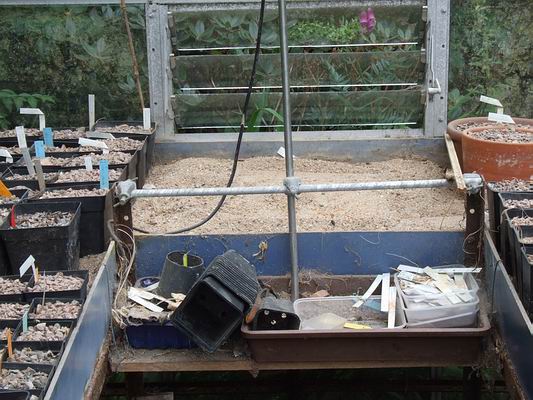
Spare plunge space
Not only do you save plunge space by going over to the square plastic pots but you can get more bulbs into a square pot as well - this means that I have a bit of space at the end of the frit house. Rather than filling it with some of the poor homeless pots sitting around on the path I have decided to fill this area with all the Crocus, Fritillaria and Narcissus bulbs that have self seeded in all the plunges. These plunge bulbs always seem so happy that I thought I would experiment in this section of spare sand this year.
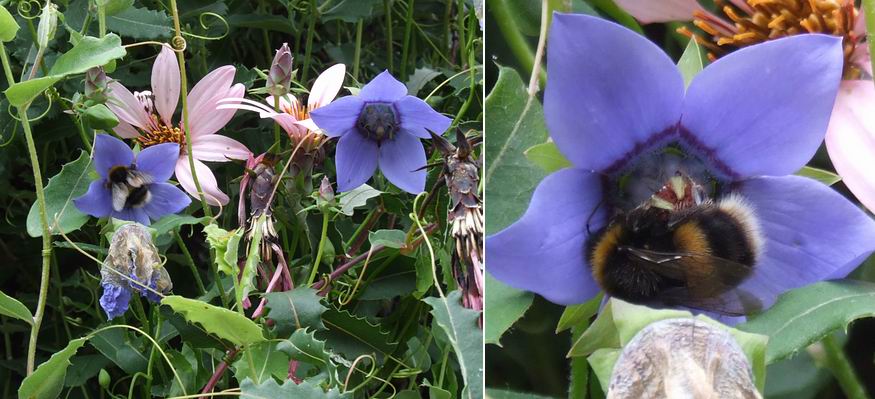
Codonopsis grey wilsonii
Back to finish the walk around the garden in search of flowering bulbs and I discovered I was not the only one engaged in this task. Mr Bumble Bee was busy collecting pollen and nectar from this Codonopsis grey wilsonii growing up through a Mutisia which is a magnificent South American climbing daisy.

Codonopsis flower detail
A close look to see what the bee finds so attractive reveals the inner beauty of this floral target.
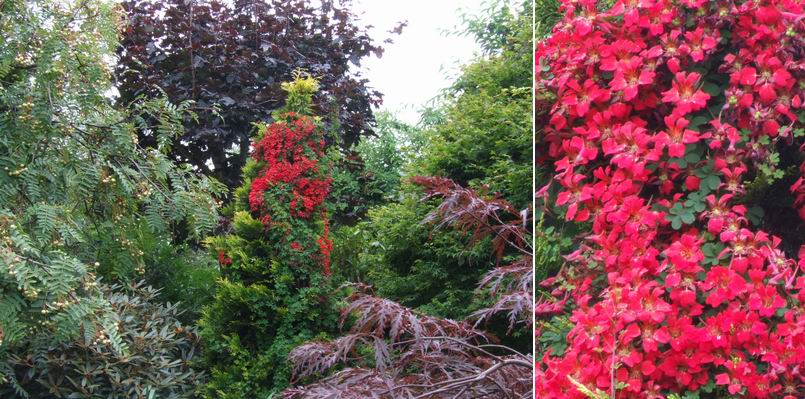
Tropaeolum speciosum
The final shot this week and the most spectacular flowering bulbous plant in the garden is also from South America - Tropaeolum speciosum. This is one of those plants that you either would love to have but cannot get it to grow or you have it and you cannot stop it taking over. We fall into the second category as this plant romps everywhere in our garden. We have to pull it out constantly especially from the smaller ericaceous shrubs which it will quickly smother and kill if we did not step in, like good gardeners, to referee. When it chooses to pick on a shrub of its own size we are happy to let it scramble and reward us with a display of its wonderful scarlet flowers for months on end.
^ back to the top ^
|

